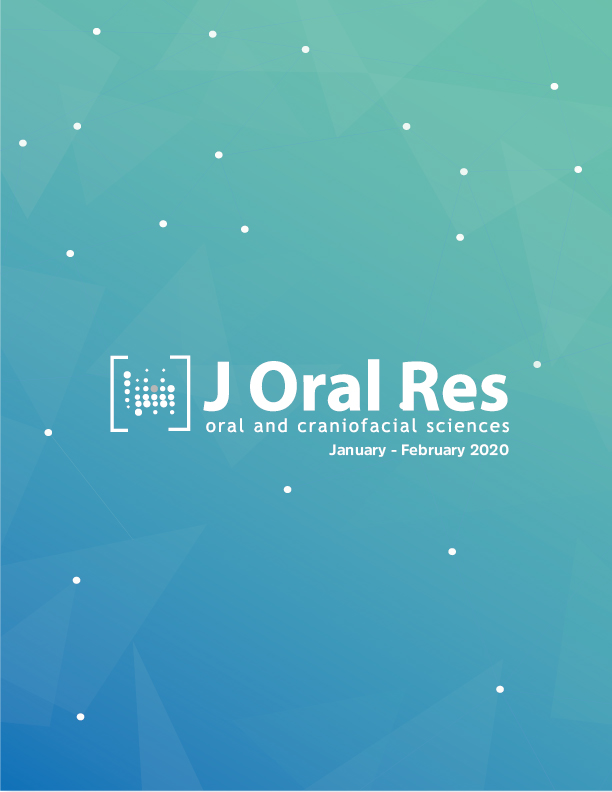Can surface protection prevent the loss of hardness on dentin and composite resin surfaces exposed to erosive challenges?
DOI:
https://doi.org/10.17126/%25xAbstract
Objective: This study investigated the effect of endogenous erosion on the microhardness of dentine and a nanofilled composite resin. Procedures for preventing erosion were also studied. Materials and Methods: 90 bovine dentine specimens were divided into three groups in accordance with the method for preventing: negative control, topical application of fluoride and resin-modified glass ionomer varnish. 120 composite resin specimens were distributed into four groups, which also included a resin sealant, among the preventive procedures. Specimens were then randomly divided into three sub-groups according to the exposure to simulate gastric acid solution and subsequent remineralization: negative control, 9 and 18 cycles. Surface analysis was carried out by measuring the Knoop hardness. The data obtained were statistically analyzed using 2-way ANOVA and Tukey test. Result: The mean hardness of dentine and of the composite specimens resin exhibited lower hardness after 18 cycles. However, the resin-modified glass ionomer varnish resulted in greater values compared to the other preventive procedures. Conclusion: A resin-modified glass ionomer varnish seems to be a promising method for minimizing the damage caused by endogenous acid, but its protection can be reduced depending on the intensity of the erosive challenge.
Downloads
Published
How to Cite
Issue
Section
Copyright (c) 2020 Universidad de Concepción

This work is licensed under a Creative Commons Attribution 4.0 International License.
This is an open-access Journal distributed under the terms of the Creative Commons Attribution License (CC BY 4.0). The use, distribution or reproduction in other forums is permitted, provided the original author(s) and the copyright owner(s) are credited and that the original publication in this journal is cited, in accordance with accepted academic practice. No use, distribution or reproduction is permitted which does not comply with these terms. © 2023.










